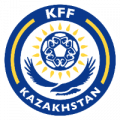‘Panama? Who are they?’ That was the echo reverberating around upcoming opponents England when the draw for the 2018 World Cup was made last December. Yet a bit of digging unlocks a colourful past for the Central American country.
Panama is home to almost four million people with nearly half of the population residing in and around the capital, Panama City. Bordering Costa Rica and Colombia, the country has a rich and eventful history mixed with Spanish, North American and South American influences.
Expect to see a few challenges...
Despite the official language of the country being Spanish and the majority of the population classed as Mestizo, a combination of European and Native American descent, there is very little tiki-taka style football as associated with the homeland of many of the population’s ancestors. A recent friendly against Denmark raised eyebrows in the way that Panama were overly aggressive in their challenges. Deploying a 5-4-1 formation, the competition outsiders are not afraid to be physical.
Then there was the contest against Costa Rica that saw them qualify for the tournament. With their opponents already assured of a place in Russia, a scrappy Roman Torres effort was adjudged to have crossed the line despite not being close to a clear goal, thwarting the chances of both Honduras and USA.
And further controversy has not been too far away from the squad. Adolfo Machado is one of several Major League Soccer players in the squad but the Houston Dynamo defender served a two-year ban for doping between 2012 and 2014. Head coach Herman Dario Gomez may be joining a list of just three managers to lead a trio of different teams into a World Cup but he was forced to step down from his duties with Colombia in 2011 when he assaulted a woman outside a bar.
Millwall, Forest, Arsenal and Man United links
There may be very little known about Panama in our country but there are a handful of English links. The national team have only won two minor international competitions with the latest being the Copa Centroamericana in 2009. Yet it was a former Millwall community outreach officer by the name of Gary Stempel who took the team to glory after living in his mother’s native England between the age of 6 and 40.
A couple of players have also been linked with moves to England. Captain Felipe Baloy was believed to be on the shortlist of Arsene Wenger at Arsenal a decade ago, whilst Roman Torres once had a trial with Nottingham Forest and Gabriel Torres previously trained with Manchester United.
The 23-man squad may have minimal collective experience in the biggest domestic leagues but they certainly know their way around a football pitch. Six players have made over 100 appearances and a further six have also passed a half-century. With almost half the squad above the age of 30, Panama will have the oldest squad in the competition.
Two sides to the fans
How they present themselves off the pitch remains to be seen. Central American compatriots in Mexico are known for the fans’ homophobic slurs and Panama’s spectators have been in trouble for similar chants in recent months.
Yet it is hoped the small pocket of fans expected to make the mammoth flight across the globe will present themselves in a good light. Blending a diverse history brings an authentic culture, particularly in the music department. Fans from across the globe will be hoping to catch glimpses of ‘the tamborito’, a mix of Spanish dance with African rhythms, and ‘reggae en Espanol’, a combination of reggae and dance music.
Whatever happens to Panama in their first World Cup, it must be remembered just how far they have developed from humble roots. Many of the squad grew up on the streets of a country swamped by gang warfare with a sharp recollection acknowledged when a veteran player, Amilcar Henriquez, was shot dead just last year. A country where football was regularly played on baseball grounds up until a few years ago, the nation's finest are looking forward to making their first appearance on the global stage.










































